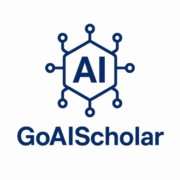Overview
ChatGPT is an advanced artificial intelligence system developed by OpenAI that specializes in natural language understanding and generation. It is built on a family of large language models (LLMs) trained to generate human-like responses to text-based inputs. The tool is widely used across industries for tasks involving writing, problem-solving, customer support, education, and more.
What Is ChatGPT?
ChatGPT is a conversational agent powered by generative AI. It can understand natural language prompts and produce relevant, coherent, and contextually appropriate text responses. Unlike traditional rule-based chatbots, ChatGPT is designed to simulate conversation and provide detailed, creative, or technical responses without predefined scripts.
How ChatGPT Works
ChatGPT is based on the Transformer architecture, a deep learning model introduced in 2017. Its core mechanism, self-attention, enables it to weigh the relevance of different parts of a text when generating a response.
Key components of its development include:
-
Pretraining on a massive dataset of publicly available text from books, websites, and articles.
-
Fine-tuning with supervised learning and reinforcement learning with human feedback (RLHF) to improve output quality and alignment with human expectations.
-
Tokenization, which breaks down input text into smaller units that the model can process efficiently.
Common Use Cases
ChatGPT supports a wide range of applications:
-
Text Generation: Drafting emails, essays, reports, and marketing content.
-
Question Answering: Providing factual responses based on general knowledge.
-
Programming Help: Writing, reviewing, and debugging code.
-
Education Support: Explaining concepts in math, science, literature, and more.
-
Automation: Assisting with customer service, scheduling, and repetitive tasks.
Capabilities and Limitations
Capabilities:
-
Processes and generates human-like text across a wide variety of topics.
-
Supports multiple languages and domain-specific content.
-
Can adapt tone and style depending on the context.
Limitations:
-
May produce incorrect or misleading information.
-
Lacks true understanding or awareness.
-
Sensitive to how prompts are phrased.
-
Responses are based on patterns in training data, not real-time access to the internet (unless connected to external tools).
Impact on Industry and Society
ChatGPT and similar language models are transforming how organizations handle information processing, customer interaction, education, and content creation. By automating language-based tasks, these tools are increasing productivity, improving accessibility, and enabling new forms of digital interaction.
However, their widespread adoption also raises ethical considerations regarding data privacy, misinformation, and responsible AI use.
Conclusion
ChatGPT represents a major advancement in artificial intelligence, particularly in natural language processing. Its ability to engage in context-aware, coherent conversation makes it a versatile tool for individuals and enterprises alike. As AI continues to evolve, tools like ChatGPT will play a central role in shaping the future of digital communication and automation.

